Fuel System Instruments and accessories
Level Switch
A level switch is a device used to detect the level of liquids, powders or granular materials in tanks, vessels or silos. The switch is designed to detect whether the level of the measured substance has reached a certain threshold or limit. When the level reaches the limit, the switch triggers an alarm, warning or control action.
Several level switches are available, each designed to operate in different conditions and environments. Some common types of level switches include:
Float switches: These switches use a float that moves up and down with the level of the liquid. When the float reaches a certain level, it triggers the switch.
Capacitance switches: These switches use a probe that detects changes in capacitance caused by the presence of the substance being measured.
Optical switches: These switches use infrared light to detect the liquid or granular material level.
Ultrasonic switches: These switches use high-frequency sound waves to measure the distance between the sensor and the surface of the measured material.
Magnetic switches: These switches use a magnet to detect changes in the level of the measured substance.
Overall, level switches are important tools for monitoring the level of materials in tanks, vessels or silos in various industries, including chemical processing, food and beverage, and pharmaceuticals.

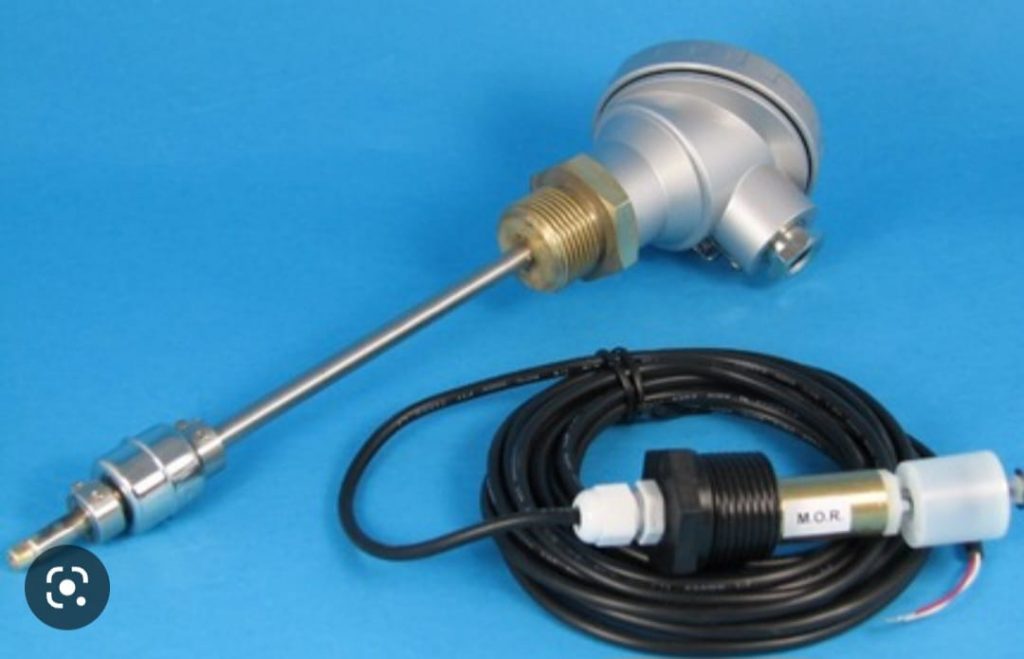
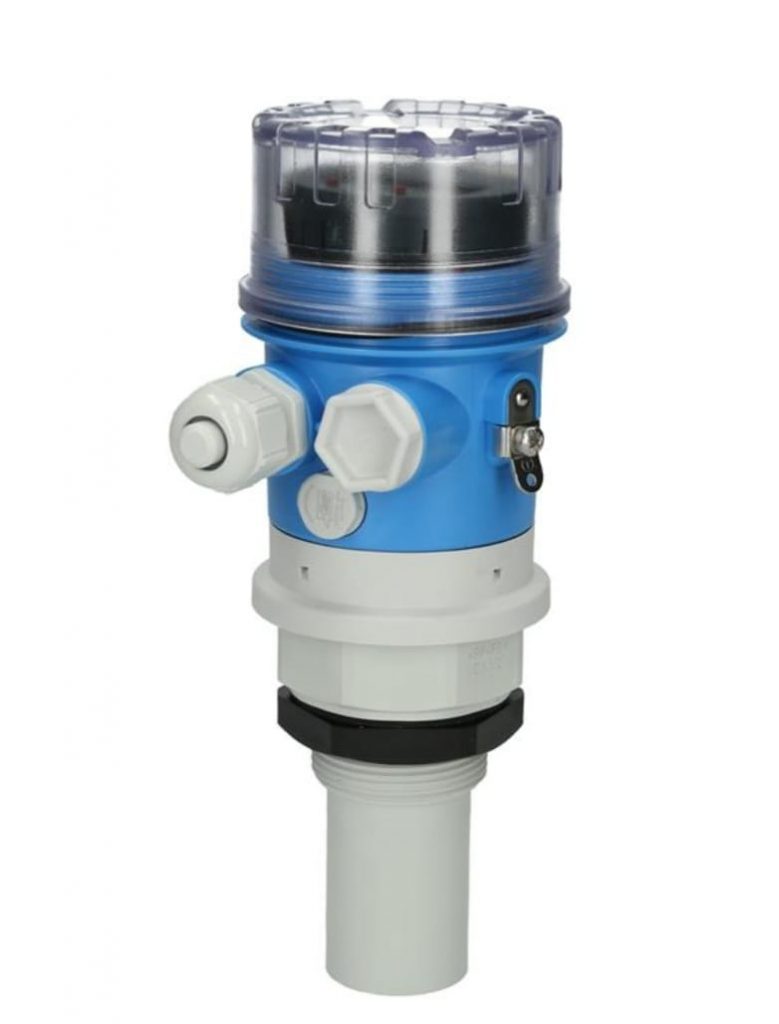
Level Transmitter
A level transmitter is a device used to measure and transmit the level of liquids, powders or granular materials in tanks, vessels or silos. Unlike level switches, which only detect whether the level has reached a certain threshold or limit, level transmitters provide continuous and accurate measurement of the level of the substance being measured.
Several types of level transmitters are available, each designed to operate in different conditions and environments. Some common types of level transmitters include:
Pressure transmitters: These transmitters measure the pressure at the bottom of a tank and use that measurement to determine the level of the substance being measured.
Ultrasonic transmitters: These transmitters use high-frequency sound waves to measure the distance between the sensor and the surface of the measured material.
Radar transmitters: These transmitters use radio waves to measure the distance between the sensor and the surface of the measured material.
Capacitance transmitters: These transmitters use a probe that detects changes in capacitance caused by the presence of the substance being measured.
Magnetic level transmitters: These transmitters use a float with a magnet inside that moves up and down with the level of the liquid. The magnet triggers a sensor that measures the substance’s level.
Overall, level transmitters are important tools for monitoring the level of materials in tanks, vessels or silos in various industries, including chemical processing, food and beverage, and pharmaceuticals. They provide continuous and accurate measurement of the level, allowing for better control and optimization of industrial processes.
OPV – Overfill protection valve.
An overfill protection valve (OPV) is a safety device installed on fuel tanks to prevent overfilling. It is designed to automatically shut off the fuel flow into the tank when the fuel level reaches a certain point.
The OPV uses a float mechanism that rises with the fuel level in the tank. When the fuel level reaches a predetermined level, the float triggers a valve to shut off the fuel flow. This prevents the tank from overfilling and spilling fuel, which can be a fire hazard and environmental risk.
OPVs are commonly used in both above-ground and underground fuel storage tanks, such as those used for gasoline, diesel, and other petroleum products. In many jurisdictions, they are legally required to handle these hazardous materials safely.
In addition to the float mechanism, an OPV typically includes various other safety features, such as a pressure relief valve and a venting system. These features help to prevent the tank from becoming over-pressurized and ensure that any vapours released during fueling are properly vented to prevent explosions and other hazards.
Overall, the OPV is an essential safety feature for fuel tanks, helping to prevent accidents and protect people and the environment from the risks associated with fuel spills and overfilling.
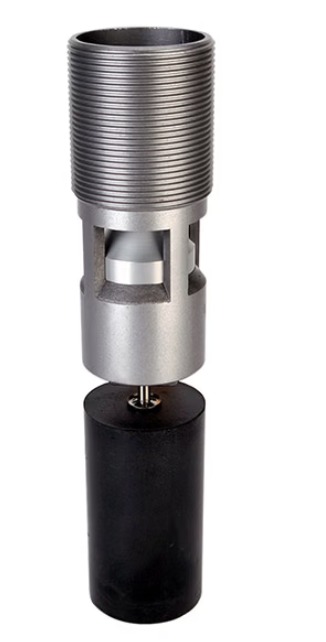
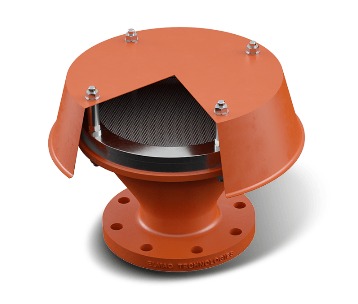

Flame arrestor, Vent and Desiccant breather
Flame Arrestor:
A flame arrestor is a safety device that prevents flame propagation from an external source to a flammable gas or vapour in a pipeline or storage tank. It provides a narrow passageway with metal plates or screens that can cool down and extinguish flames while allowing gas or vapour flow to continue.
Vent:
A vent is a device used to release pressure and/or prevent the buildup of a vacuum in a storage tank or vessel. Vents are designed to protect the tank or vessel from damage due to overpressure or vacuum and to prevent explosions or implosions that may occur if the tank or vessel is not vented correctly.
Desiccant Breather:
A desiccant breather is a device that removes moisture and particulate matter from the air entering a storage tank or other sealed vessel. It is used to protect the contents of the tank or vessel from contamination by moisture and particulates, which can cause corrosion and other problems. Desiccant breathers typically contain a desiccant material, such as silica gel, that absorbs moisture from the air passing through the breather
Tank Alarm
The fuel tank level alarm is a device that alerts the user when the fuel level in a tank falls below a certain threshold. The alarm can be visual or audible and is usually set to go off when the tank is nearly empty to prevent the fuel from running out completely.
Fuel tank level alarms are commonly used in vehicles, boats, and other equipment that rely on fuel. They are important safety features that help prevent accidents caused by fuel depletion.
Different types of fuel tank level alarms are available in the market, ranging from basic mechanical switches to advanced electronic sensors that can provide precise readings of fuel levels in real-time. The choice of alarm depends on the application’s specific requirements, the fuel used, and the budget available for the purchase.
Tank high and low-level alarms:
Tank high and low-level alarms are devices used to monitor the liquid level in a tank and alert the user when the level reaches a certain threshold. The high-level alarm is set to go off when the liquid level in the tank rises above a certain point, while the low-level alarm is set to go off when the liquid level in the tank falls below a certain point.
These alarms are commonly used in various industries, such as chemical, petrochemical, and water treatment plants, where tanks are used to store liquids. They help prevent overflows or dry runs, which can damage equipment or even safety hazards.
The high and low-level alarms are typically connected to the tank through sensors that detect the liquid level and send signals to the alarm system. The alarm can be visual, audible, or a combination of both, depending on the user’s preference and specific application requirements.
In addition to high and low-level alarms, some tanks may have intermediate-level alarms that alert the user when the liquid level is within a certain range. This can be useful for applications where a specific volume of liquid needs to be maintained in the tank.
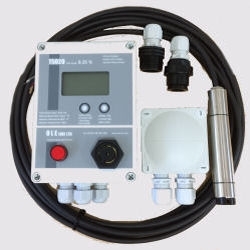
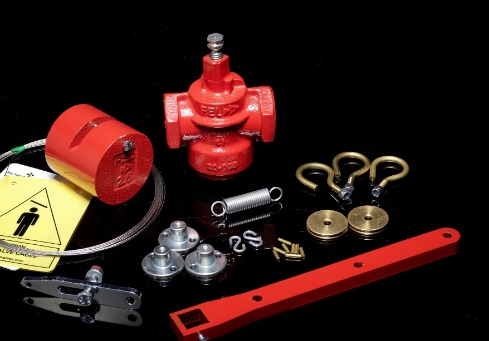
Fire Shutoff Valves
A generator set fire shutoff valve is a safety device that automatically shuts off the fuel supply to a generator set in the event of a fire. This prevents the generator set from adding fuel to the fire and potentially worsens the situation.
The valve is typically installed on the fuel supply line between the fuel tank and the engine and is activated by a signal from a fire detection system. When the valve receives the signal, it closes off the fuel supply to the engine, starving it of fuel and causing it to shut down.
Different generator-set fire shutoff valves are available on the market, but they all serve the same purpose of preventing fuel from feeding a fire. They can be mechanical or electrically operated and can be activated by various signals, such as smoke detectors or manual switches.
It is important to maintain and test generator set fire shutoff valves correctly to ensure that they will function properly in the event of a fire. Regular inspections and testing can help identify any issues and ensure the valve activates when needed.
Overall, generator set fire shutoff valves are an important safety feature for any generator set installation and can help prevent catastrophic damage in a fire.
Fuel shutoff Actuators
Fuel shutoff actuators are devices designed to control the fuel flow to an engine to turn it off safely and in a controlled manner. These actuators are typically used in automotive and marine engines and aircraft engines to prevent damage or accidents in an emergency or a malfunction.
Fuel shutoff actuators work by cutting off the fuel flow to the engine’s combustion chamber, either by closing a valve or by interrupting the electrical circuit that controls the fuel injectors. This is typically accomplished through the use of a solenoid, which is an electromechanical device that converts electrical energy into mechanical motion.
There are many different types of fuel shutoff actuators, including:
Mechanical fuel shutoff valves: These valves are operated manually and are typically used in small engines or as a backup in case of an electrical failure.
Electric fuel shutoff valves: These valves are operated by an electrical signal and are commonly used in automotive and marine engines.
Solenoid fuel shutoff valves: These valves use a solenoid to control fuel flow to the engine and are commonly used in aircraft engines.
Fuel shutoff relays: These relays interrupt the electrical circuit that controls the fuel injectors and are commonly used in diesel engines.
Fuel shutoff actuators are an important safety feature in many different types of engines. They can help prevent accidents and damage to the engine in the event of an emergency or malfunction.

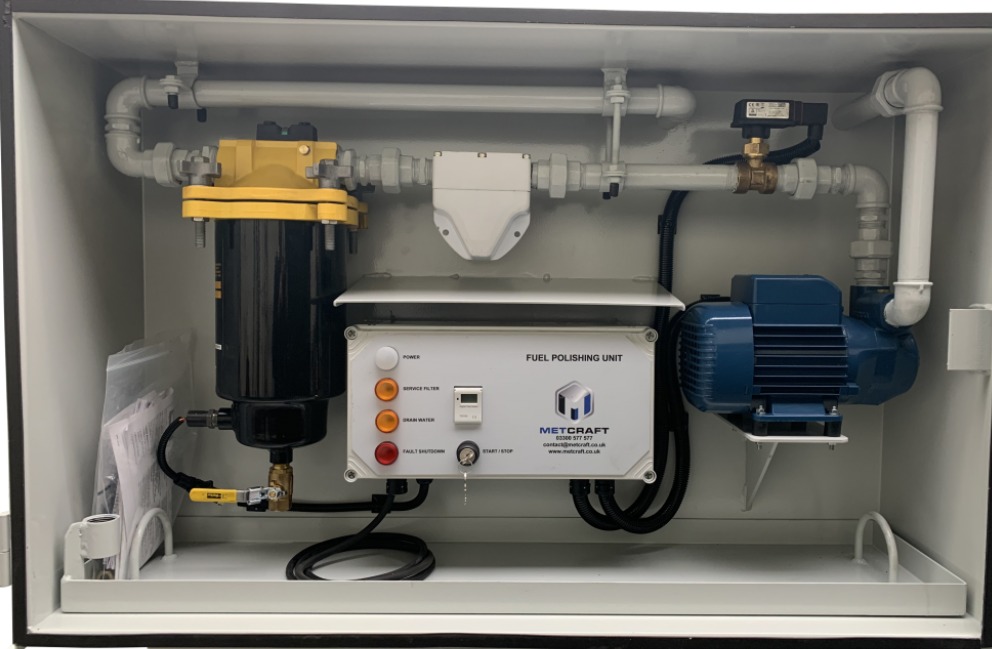
Fuel Polisher
A fuel polisher is a device or system that removes impurities from fuel, such as diesel or gasoline, to improve its quality and ensure its proper function in engines or other equipment. The process of fuel polishing involves filtering the fuel to remove contaminants, such as water, dirt, and debris, that can cause engine damage or failure.
Fuel polishers are commonly used in the marine, aviation, and automotive industries, where high-quality fuel is critical for safety and performance. They can also be used in industrial settings, such as power plants, where fuel quality is essential for efficiency and reliability.
A typical fuel polisher system consists of a filter assembly, a pump, and a control panel. The filter assembly contains one or more filters that remove contaminants from the fuel as it flows through the system. The pump circulates the fuel through the filters, and the control panel manages the system’s operation and monitors the fuel’s quality.
Fuel polishers can be installed as a standalone unit or integrated into a larger fuel management system. They can be designed to handle various fuel types and flow rates and customized to meet specific industry requirements and regulations.
Overall, fuel polishers are an important tool for ensuring the quality and reliability of fuel and can help prevent costly engine damage and downtime.
Temperature sensors
Temperature sensors are devices that measure the temperature of a particular environment or object and provide feedback in the form of an electrical signal or other output. They are widely used in various applications, including industrial process control, home and commercial HVAC systems, automotive systems, and medical devices.
There are many different types of temperature sensors, each with its own strengths and weaknesses. Some of the most common types include:
Thermocouples: These are made up of two different metal wires joined together at one end. When the temperature changes, a voltage is produced at the junction of the wires, which can be measured and used to calculate the temperature.
Resistance temperature detectors (RTDs): These are made of a metal wire, such as platinum or nickel, that changes resistance as the temperature changes. The change in resistance can be measured and used to calculate the temperature.
Thermistors: These are made of a ceramic material that changes resistance as the temperature changes. They are typically more sensitive to temperature changes than RTDs and thermocouples but can be more difficult to calibrate.
Infrared sensors: These detect infrared radiation emitted by objects and can be used to measure their surface temperature. They are often used in industrial and medical applications.
Bimetallic strips: These are made of two different metals with different coefficients of thermal expansion, which causes them to bend when the temperature changes. They are commonly used in thermostats and other temperature control systems.
Temperature sensors can be used in various ways, such as to control heating and cooling systems, monitor industrial processes, or measure the temperature of food and beverages. They are an important tool for ensuring safety, quality control, and efficiency in many different industries.
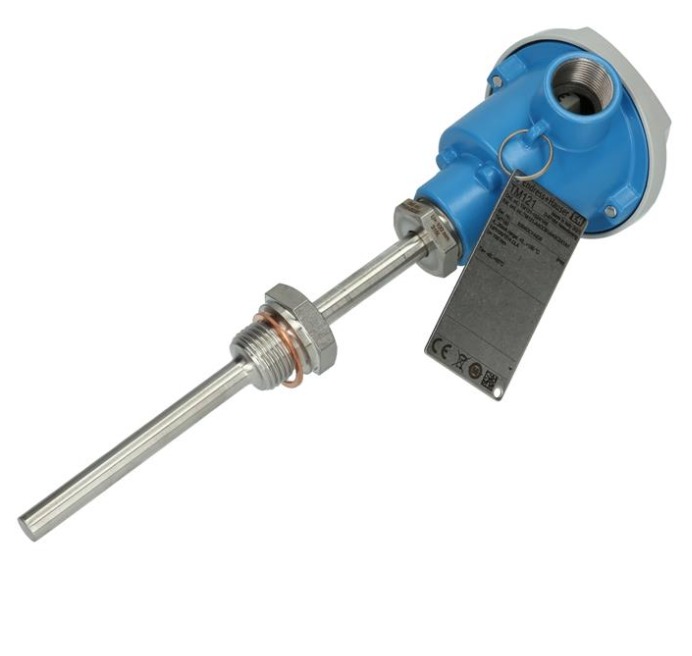
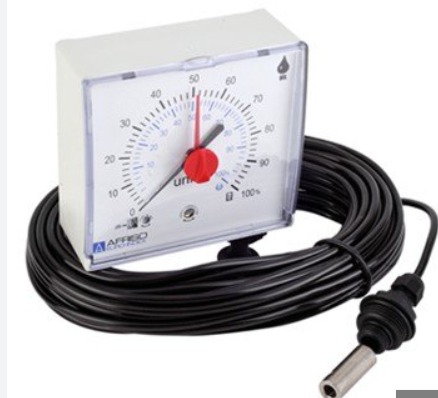
Mechanical Level Gangues
A fuel tank gauge is a device used to measure the fuel level in a fuel tank. It is typically found in vehicles, boats, and other machinery that uses fuel and is important for monitoring fuel consumption and ensuring that the tank does not run empty.
Several types of fuel tank gauges are available, including mechanical gauges, which use a float to measure the fuel level and a gauge to display the level to the user. These gauges are relatively simple and reliable but may require periodic calibration to ensure accuracy.
The type of gauge used will depend on the specific application and requirements for accuracy, reliability, and cost.
Pressure Gauges
A pressure gauge is a device that measures the pressure of a fluid or gas within a closed system. It typically consists of a bourdon tube or diaphragm that responds to changes in pressure, which are then transmitted to a pointer on a dial that displays the pressure reading.
Pressure gauges can be used in various industries, including manufacturing, oil and gas, chemical processing, and utilities. They monitor and control pressure levels in tanks, pipelines, and other systems, ensuring they operate safely and efficiently.
Several pressure gauges include analogue, digital, and differential gauges. Analog gauges use a mechanical system to display the pressure reading, while digital gauges use electronic sensors to measure and display pressure digitally. Differential gauges are used to measure the difference in pressure between two points.
Pressure gauges can also be classified based on accuracy, size, and measurement range. They may be designed to measure pressure in psi, bar, kg/cm2, or other pressure units.
Proper maintenance and calibration are essential for ensuring the accuracy and reliability of pressure gauges. Over time, these instruments may become damaged or lose their calibration, leading to inaccurate readings. Regular inspection and calibration can help prevent these issues and ensure pressure gauges function properly.
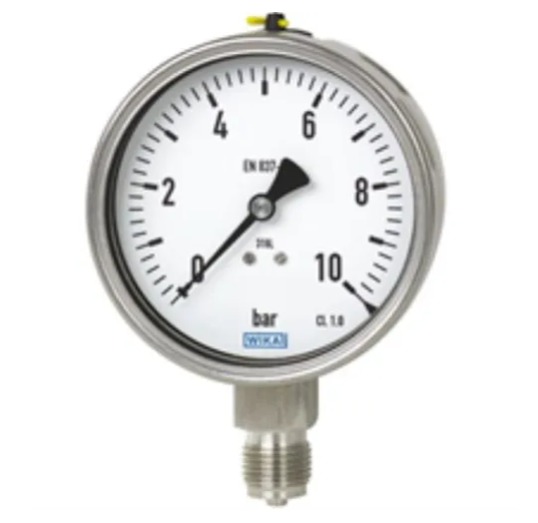
Talk to us
Have any questions? We are always open to talking about our products and quote the best price in the market
